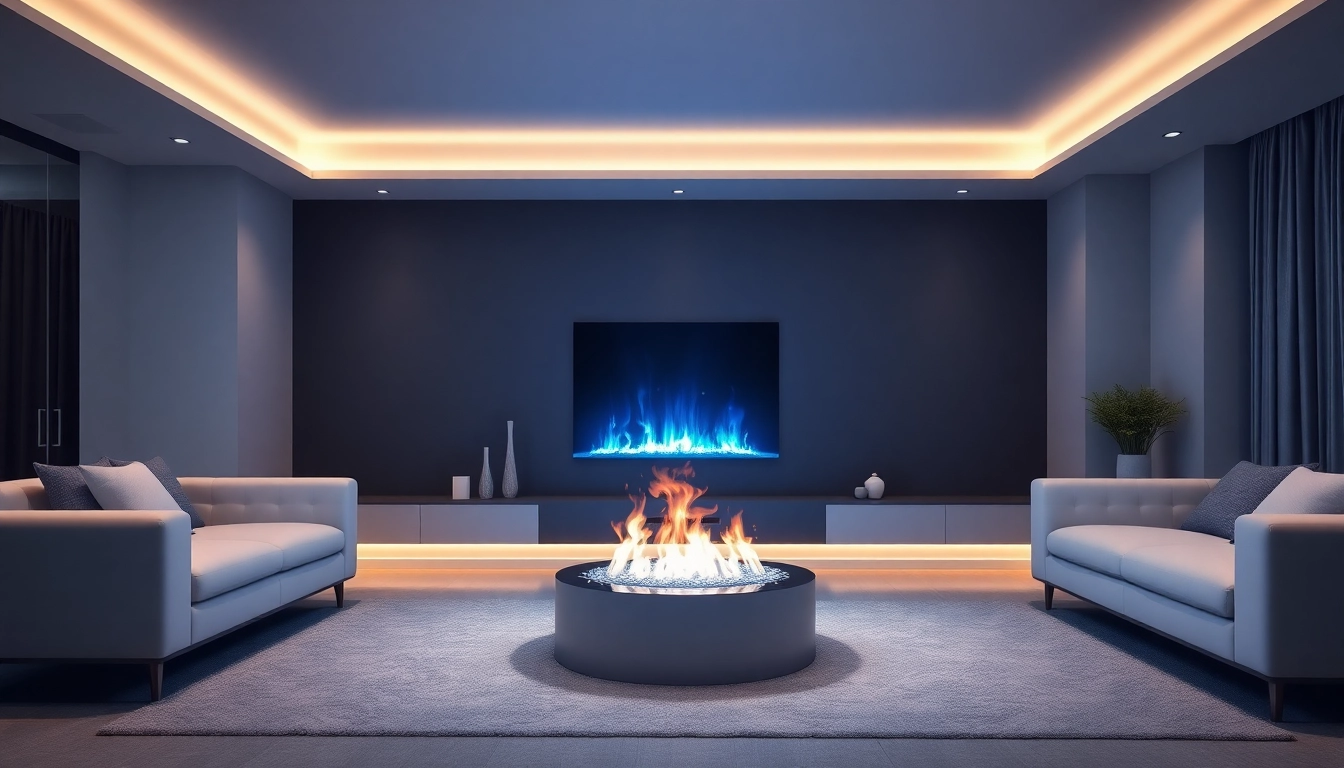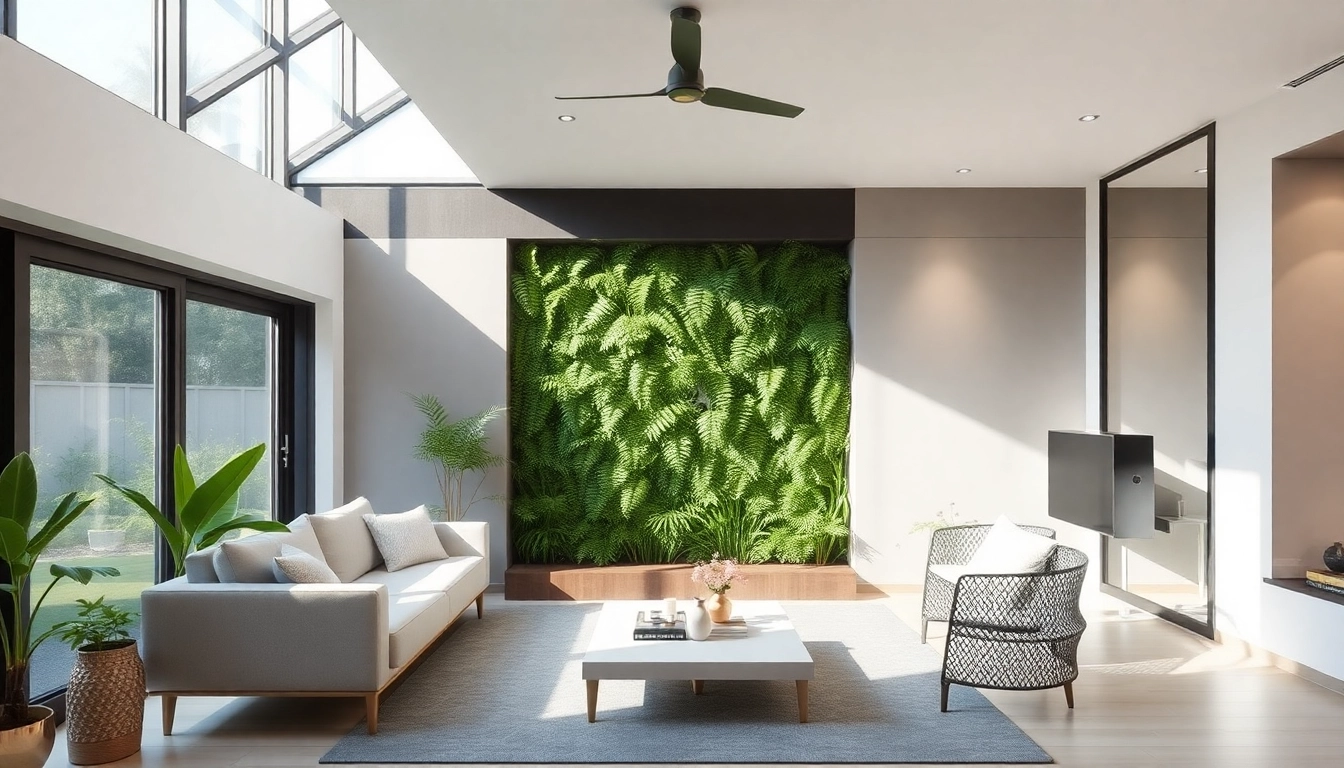Understanding the Basics of Interior Painting
Introduction to Interior Painting Techniques
Transforming a home through interior painting involves understanding various techniques, tools, and approaches. Whether you are looking to refresh your spaces or tackle a comprehensive renovation, mastering the basics of interior painting is essential. This section provides an overview of the foundational techniques used in interior painting, highlighting what you will need to create professional-quality results.
Essential Tools for Successful Painting Projects
Having the right tools at your disposal is crucial for achieving the desired finish in any interior painting job. Here’s a breakdown of essential equipment:
- Paint rollers: Ideal for covering large areas quickly, these come in various nap lengths, allowing you to choose the appropriate type based on the texture of the surface you’re painting.
- Brushes: Use a combination of angled and flat brushes to address different areas. For detailed work, smaller brushes are beneficial.
- Painter’s tape: To achieve clean lines, apply painter’s tape along edges and trims to protect adjacent surfaces from paint overflow.
- Drop cloths: Protect your floors and furniture by laying down drop cloths, which absorb accidental spills and splatters.
- Paint trays and liners: These hold paint for your rollers and brushes, allowing for easy loading.
- Extension poles: Attach these to your roller for reaching high ceilings without the need for a ladder.
- Lint-free rags: Handy for clean-up tasks and correcting small mistakes during the painting process.
Choosing the Right Paint for Your Space
The selection of paint can significantly influence the aesthetics, durability, and maintenance of your interior spaces. Factors to consider include:
- Type of paint: Water-based paints tend to be user-friendly and dry quicker, while oil-based paints offer a richer finish and greater durability.
- Finish: Options vary from matte to glossy. Matte is great for low-traffic areas, while satin or semi-gloss finishes are better suited for high-use areas like kitchens and bathrooms.
- Color: Light colors can help make a small space feel larger, while dark colors can create an intimate ambiance. Consider the impact of natural light on your paint choice.
- Quality: Investing in higher-quality paint can enhance the finish and lifespan, reducing the need for frequent repaints.
Planning Your Interior Painting Project
How to Prepare Your Room for Painting
Proper preparation can save time and effort during the actual painting process. Here are steps to prepare your room:
- Clear the Space: Remove furniture and fixtures where possible. If there are items that can’t be moved, cover them thoroughly with drop cloths.
- Clean the Walls: Dust and wash surfaces to remove dirt and grease, ensuring proper paint adherence.
- Repair Walls: Fill any holes or cracks with spackling compound, then sand smooth once dry.
- Apply Primer: If you’re making a dramatic color change or working with new drywall, apply a layer of primer to ensure better paint coverage.
Estimating Costs and Budgeting for Your Project
Understanding the costs involved in interior painting can help you plan your budget effectively. Typically, costs include:
- Paint: Depending on the quality and quantity needed, paint can range from $20 to $60 per gallon.
- Supplies: Budget for brushes, rollers, painter’s tape, drop cloths, and tools—usually between $100 to $300.
- Labor: If hiring professionals, the labor cost might range from $2 to $6 per square foot.
- Miscellaneous Fees: Don’t forget to include charges for any additional services like wall preparation or trim work.
Time Management Tips for Effective Painting
To avoid feeling overwhelmed, it’s essential to establish a timeline for your interior painting project. Here are some strategies:
- Create a Schedule: Break down the entire project into manageable tasks and set deadlines for each.
- Work in Sections: Focus on one room or area at a time to streamline your workflow and minimize chaos.
- Establish a Team: If you’re working with others, delegate specific tasks based on strengths (e.g., someone who’s great with details can focus on trim).
Mastering Interior Painting Techniques
Brush vs. Roller: Understanding the Differences
When it comes to painting, brushes and rollers serve distinct purposes:
- Brushes: Perfect for cutting in around edges, corners, and detailed areas. They provide more control and are ideal for trim and moldings.
- Rollers: Best for covering large, flat surfaces quickly. Rollers can significantly reduce the time spent painting walls and ceilings.
The choice depends on the specific area being painted and the desired finish. Many professional painters use both tools in tandem for the best results.
Advanced Techniques for Smooth Finishes
A smooth finish is the hallmark of a professional paint job. Here are advanced techniques to achieve this:
- Feathering: Blend edges where paint overlaps by lightly dragging your brush or roller outwards to create a smooth transition.
- Wet Edging: Always perform the next stroke while the paint is still wet to avoid visible lines or streaks.
- Multiple Coats: Applying multiple thin coats instead of one thick coat yields a more even appearance and better durability.
Common Mistakes to Avoid While Painting
Even seasoned painters can make mistakes. Here’s a look at pitfalls to avoid:
- Skipping Preparation: Neglecting prep work can lead to poor results, such as peeling paint and uneven surfaces.
- Using Low-Quality Supplies: Investing in good-quality brushes and paint pays off in the longevity and appearance of the finish.
- Overloading the Brush or Roller: Applying too much paint can lead to drips and an uneven finish. Ensure you remove excess paint before applying.
- Poor Lighting: Failing to keep the work area well-lit can lead to mistakes or missed spots. Always assess your work in natural daylight when possible.
Color Choices and Trends in Interior Painting
How to Select the Perfect Color Palette
Choosing the right color palette requires consideration of various factors, including:
- Function of the Space: Lighter colors often work better in smaller or darker rooms, while bold colors can enhance spacious areas.
- Existing Décor: Consider the colors of your furniture, flooring, and accessories to create a harmonious look.
- Personal Preference: Ultimately, your home should reflect your personal style. Don’t hesitate to embrace colors you love.
Current Trends in Interior Paint Colors
Staying updated with the latest trends can enhance the appeal of your home. Some current trends include:
- Earthy Tones: Warm, muted colors like terracotta and olive green are popular for creating a cozy atmosphere.
- Pale Pastels: Soft colors like blush and light blue bring tranquility and freshness to any interior space.
- Dark Hues: Deep shades, including navy and charcoal, are trending for accent walls, adding drama and sophistication.
Using Color Psychology in Your Home Design
Colors can influence mood and emotions significantly. Understanding color psychology can aid in creating desirable atmospheres:
- Blue: Often associated with calmness, it can create a peaceful environment in bedrooms or bathrooms.
- Yellow: Known for its stimulating nature, it’s a great option for kitchens or creative spaces.
- Green: Represents nature and can provide a refreshing feel, perfect for living areas and offices.
Hiring Professionals for Your Interior Painting Needs
When to Consider Professional Painting Services
While tackling a painting project yourself can be fulfilling and cost-effective, certain situations call for professional expertise:
- Complex Projects: Large spaces with intricate details may require professional skills to achieve desired results.
- Safety Concerns: High ceilings or awkward spaces can pose safety risks, making professional assistance a wise choice.
- Lack of Time: If your schedule is tight, hiring a professional can ensure the job gets done efficiently and correctly.
Finding the Right Painter for Your Project
Choosing the right painting contractor can significantly affect the outcome of your project. Here are some tips:
- Get Recommendations: Ask friends or family for their experiences or consult online reviews.
- Check Credentials: Ensure potential contractors are licensed and insured, which protects you in case of accidents.
- Request Quotes: Collect quotes from multiple contractors to compare pricing and understand your options.
Questions to Ask Before Hiring a Painting Contractor
Before finalizing your decision, consider asking these key questions:
- What is your experience in interior painting?
- Do you provide a written estimate and timeline?
- What types of paint do you recommend, and why?
- Do you offer a warranty or guarantee?



